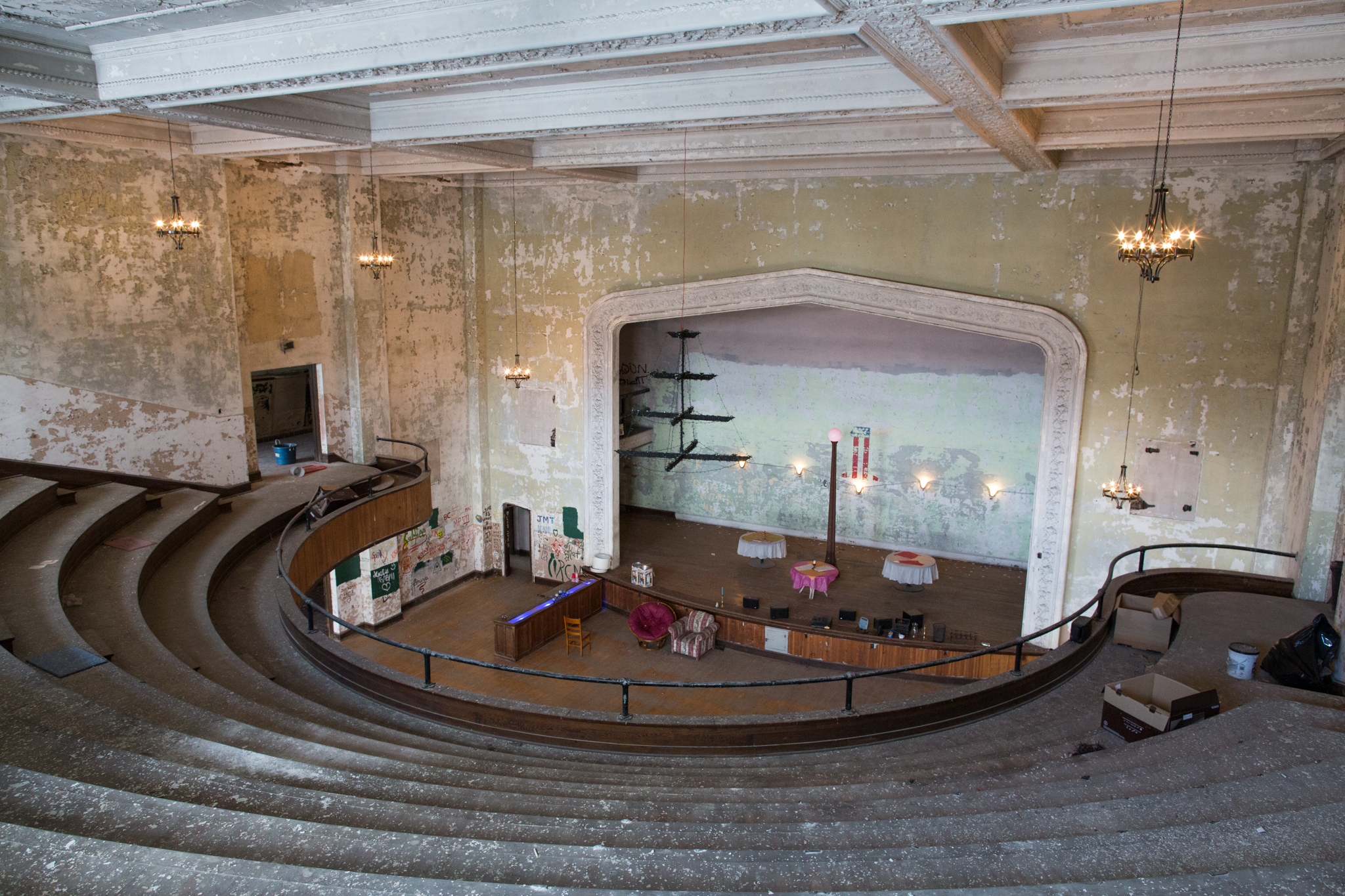
A big driving force was to not see this building fall.
Lawrence Calfee: My mom tells me ever since I was five years old I’d point at that building and say I’m going to own it one day. I had sold a house locally and needed a workshop, so I went to look at who owned the building. It was just boarded up and kind of an afterthought. I got in contact with the owners— this was about eight years ago – and they showed me the building.
The roof leaked. There were mini waterfalls throughout the building and feet of bird droppings and debris. I told them, ‘I’m interested in the building, but I can’t really offer what you’re asking for it.’
They told me to send a letter with my offer and we’d go from there. So, I did and kind of wrote it off. I didn’t think they’d contact me again.
Four years later, they called me and said that in the years of people inquiring about the building, they got the best vibe from me. I told them I had just bought a piece of property and didn’t have the offer I made four years ago. They said, ‘No, you misunderstand. We want to give you the building.’
I was young and figured it would be fine. I’d address it. In the process of transferring the deed, they called me and reneged on their offer. But they were still interested in making me the manager and caretaker of the building. I declined. Two weeks later they called me back, and I took it from there.
I’d seen the Brownstone, a bank building on the corner downtown, just sit and deteriorate and collapse. I’d seen the Milner Matz fall. A big driving force was to not see this building fall.
In the first five weeks, we abated and sanitized every floor and classroom. Hauled off 36 skids. Since then I’ve put a garage in there. I’ve got a couple of workshops. I had intentions of putting in artist spaces to kind of help offset the costs of the climate control.
I’m breathing new life back into this building. It doesn’t take much to maintain it. It no longer leaks. It has power throughout, water throughout. I’ve gotten it there. It’s ready.
All the talent is leaving, and there’s a reason for that. There’s honestly not a place in this world that I’d rather live and be. But unfortunately, there’s things that have to change for me to be able to do that. Once we have jobs around this area, good-paying jobs, manufacturing jobs – jobs we used to have – I think once that changes, the other problems will follow suit. I hope. But Appalachia is home. I love it.
Lawrence Calfee, 34, is holding on to the 88,000-square-foot former Beaver High School building in hopes of helping to revitalize the town. He refers to it as his “fortress of solitude” and says it’s far from a nightmare or a burden, it’s a place he looks forward to continuing work. He says he would like to see it become a place where people could acquire jobs or training. He would also sell, but would rather keep it until the day he dies, than sell it to a salvage company. A carpenter by trade, Calfee has sold his other properties in Bluefield, West Virginia and is relocating with his fiancé to North Carolina. Meanwhile, he still works on keeping the building from falling down.
The Beaver High School building was built in 1911 along 3rd Street in Bluefield. In 1924 it was closed due to damage from a large fire and renovated by Bluefield architect, Alex B. Mahood. Seven months later, the building reopened and served as Beaver High until 1953 when a new high school building opened and Beaver High was relocated. The building served as Central Junior High until 1983, the year Calfee was born. The distinctive crenels, the sawtooth battlement structures on the roof, set this building apart from many in the town.




In ‘100 Days, 100 Voices’ Nancy Andrews presents photographs depicting the diversity of voices across Appalachia. These portraits strive to show the varied faces, passions, issues and opinions from around the region. These interviews have been edited for brevity and clarity. If you have an idea for ‘100 Days, 100 Voices’ please contact Nancy Andrews on Twitter @NancyAndrews or email at nancy.andrews [at] mail.wvu.edu. Follow her on Instagram @NancyAndrews.



